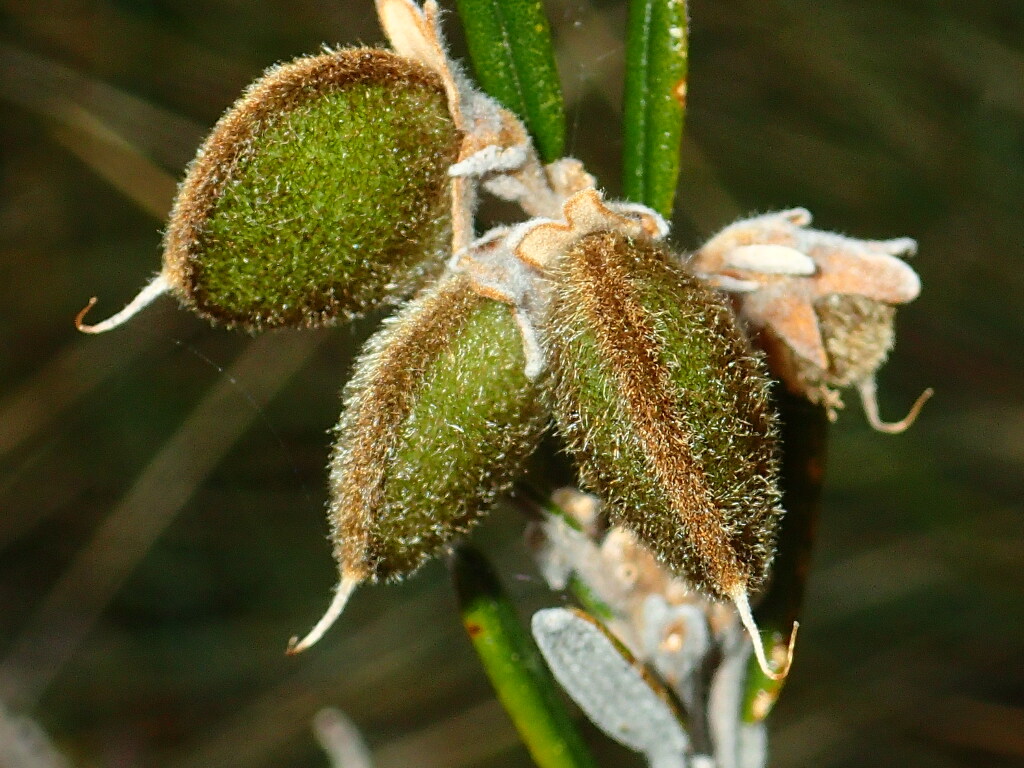Hovea montana
(Hook.f.) J.H.RossSpreading, compact, multistemmed shrub to 0.5 m high; stems ascending or the outer decumbent, sometimes rooting; branchlets with dense coiled or curled appressed hairs with some spreading hairs. Leaves narrowly ovate, elliptic or oblong, 0.5–3.2 cm long, 0.2–0.7(–1.1) cm wide; apex obtuse or acute; upper surface arched up either side of the depressed midrib; lower surface with dense coiled or curled hairs; margin revolute; stipules narrowly ovate, to 1.4 mm long. Inflorescences ± sessile, usually 2-flowered; pedicels 2–5 mm long; bract inserted 0.8–3.5 mm below the bracteoles; bracteoles 1–2 mm long, obtuse or broadly acute; upper lobes of calyx 4.5–5.8 mm long (including tube); corolla usually deep mauve to violet-blue, occasionally white; standard 7.5–9.8 mm long (including claw); stamen-filaments 5.5–7.7 mm long. Pods sessile or almost so, densely rusty-pubescent. Flowers Oct.–Dec.
CVU, EGU, HSF, HNF, VAlp. Also NSW, Tas. Usually in open alpine heath and on grassy slopes in subalpine heath and Snow-gum woodland at altitudes between 1200 and 1830 m.
Ross, J.H. (1996). Hovea. In: Walsh, N.G.; Entwisle, T.J., Flora of Victoria Vol. 3, Dicotyledons Winteraceae to Myrtaceae, pp. 804–808. Inkata Press, Melbourne.
 Spinning
Spinning

